Test Embed Page made with 10.1.0 generator and 10.0.5 embed wrapper
Click here for a list of include paths
Click here for a test page with no right hand side
Lorem ipsum dolor sit amet, consectetur adipiscing elit. Integer a purus eu nisl porta aliquam. Morbi pharetra aliquet dolor a cursus. In auctor dolor a felis feugiat ultrices. Phasellus sagittis aliquet mattis. Etiam turpis neque, auctor a pulvinar a, vestibulum consequat ante. Morbi ut dui eget sapien vulputate viverra. Curabitur luctus malesuada nunc.
Nullam gravida erat ut porttitor sollicitudin. Aliquam feugiat odio rutrum arcu tincidunt vehicula. Donec nec dolor rhoncus, consectetur metus eget, consectetur enim. Duis euismod, arcu non efficitur porta, nibh eros viverra risus, ac gravida lorem ex in dui. Morbi pulvinar varius erat, quis facilisis ligula mollis vel. Nulla efficitur augue quam, ac aliquet mi ornare vitae. In ornare nisl eget tortor aliquam consectetur id nec lorem. Pellentesque massa dolor, placerat ac risus a, aliquam rhoncus nulla.
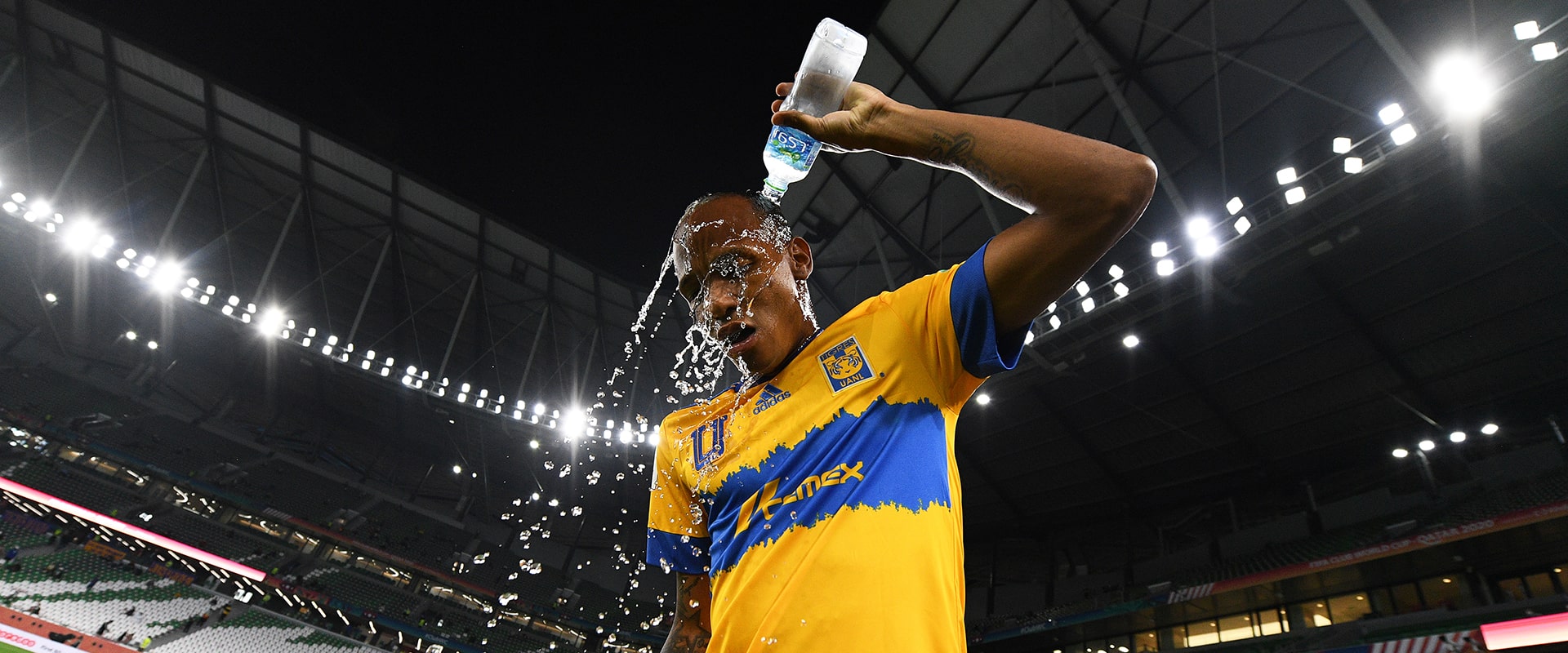
World Cup 2022: Cool ways to cool a desert stadium
- BBC News Arabic and World Service Visual Journalism Team
- Qatar World Cup 2022
When the Gulf state of Qatar was selected as host for the 2022 World Cup, it raised a few eyebrows, ranging from concerns about the kingdom's human rights record to actual logistical challenges like how would players and fans cope in a country with temperatures exceeding 40C?
Moving the tournament to the winter was one answer. But the wealthy desert nation is still promising to leave a radical legacy: advances in technology that would make hosting major sporting events possible all year round, even in the hottest countries. Local Qatari footballer Hajar Saleh says the heat and humidity make playing in the region a massive challenge.
So how will they make life comfortable for players and spectators?

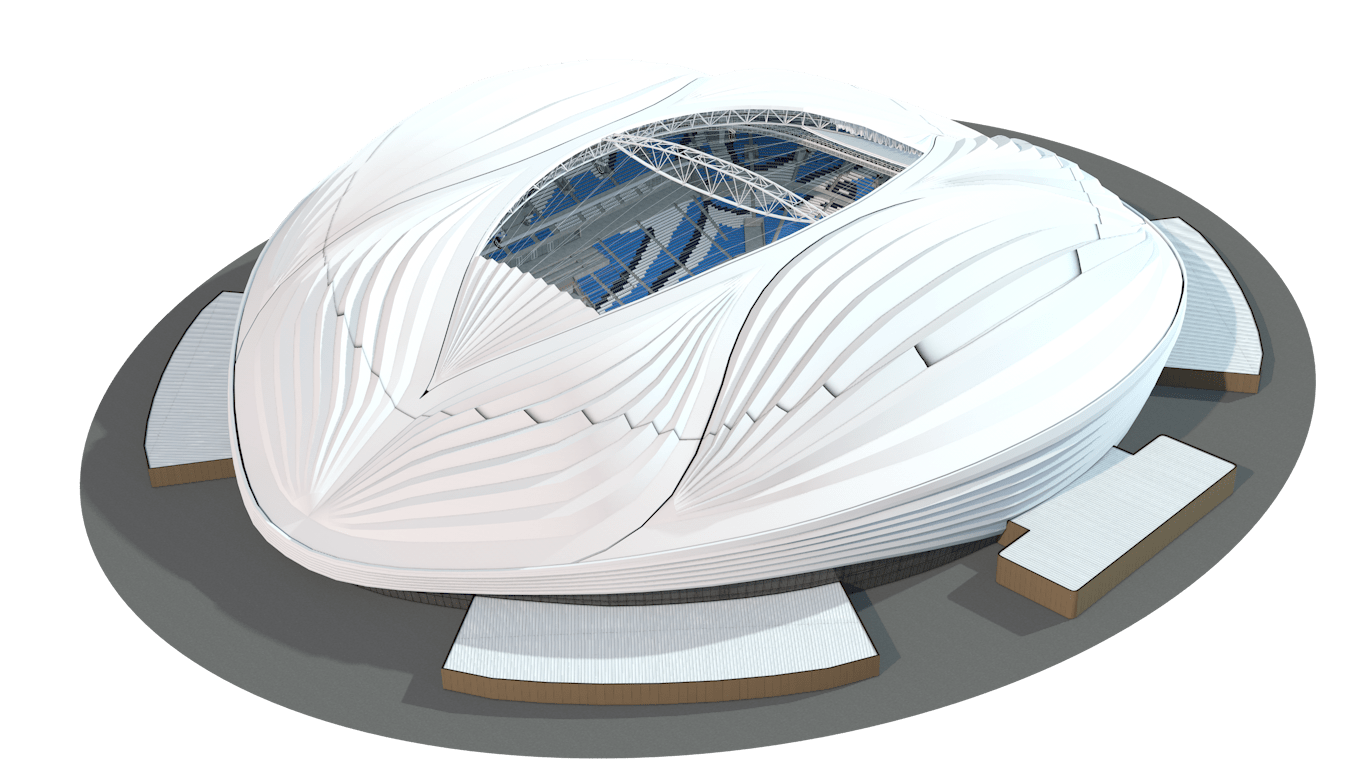


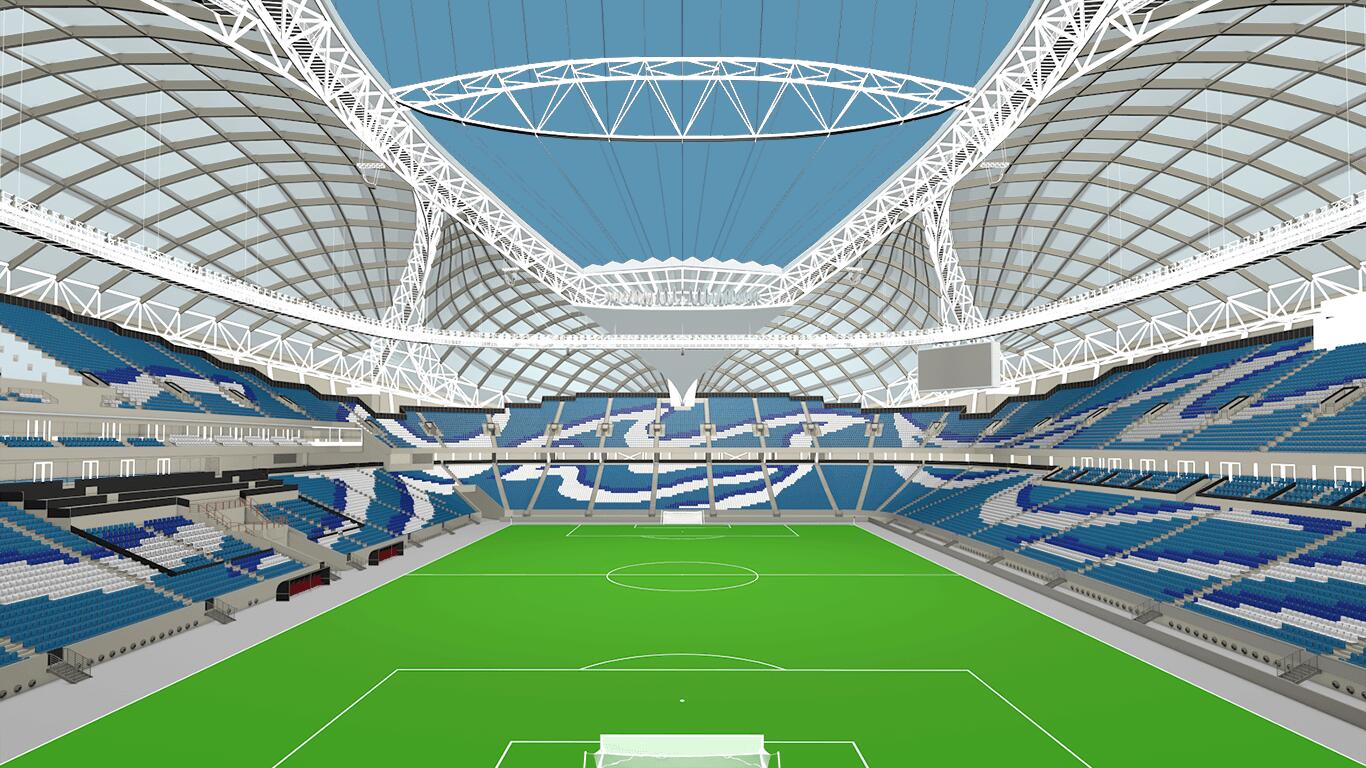
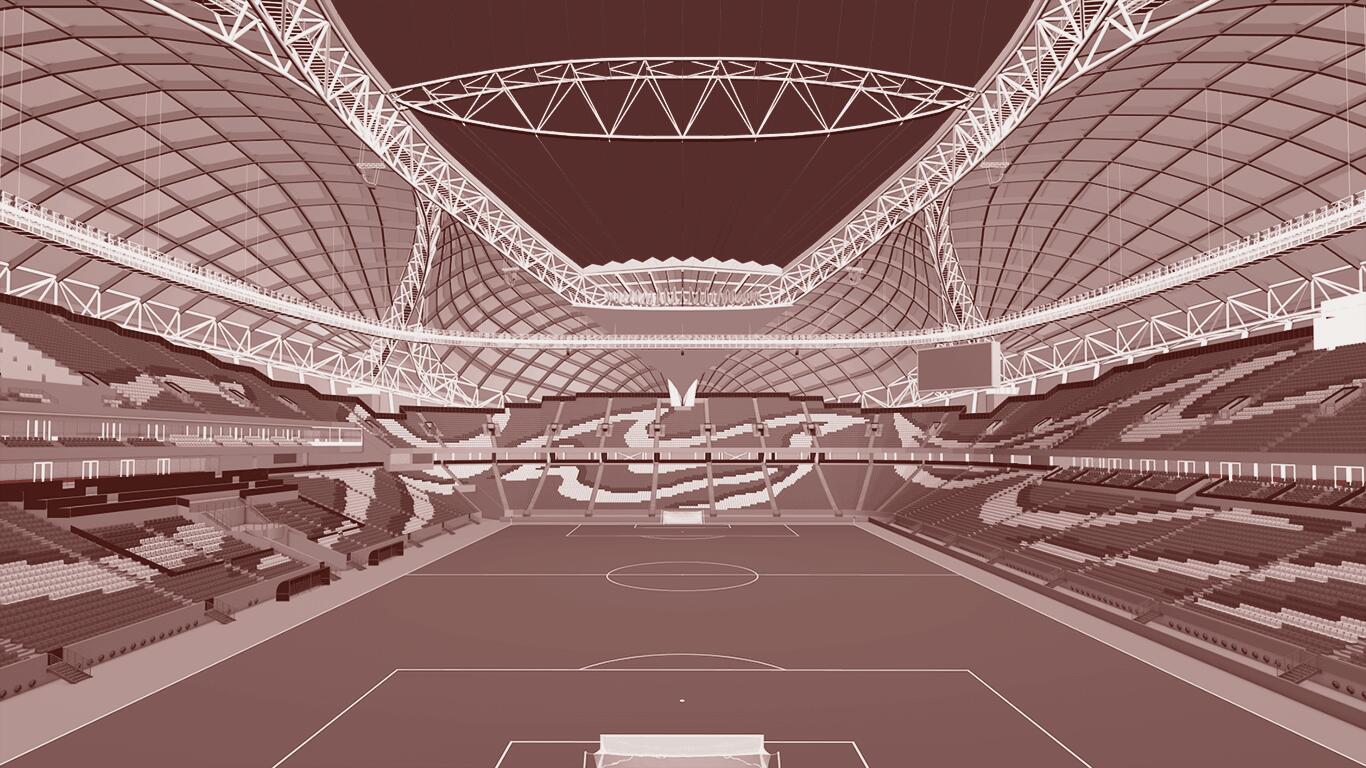



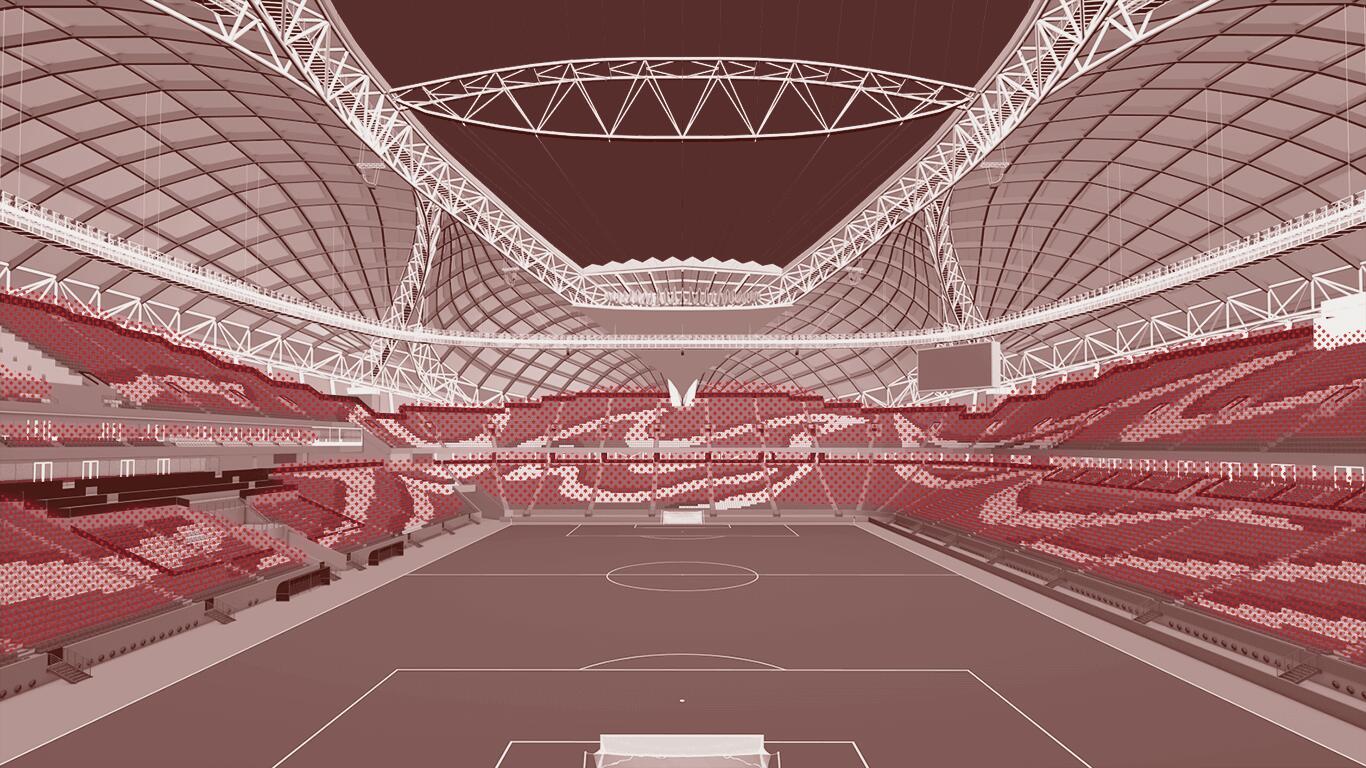






















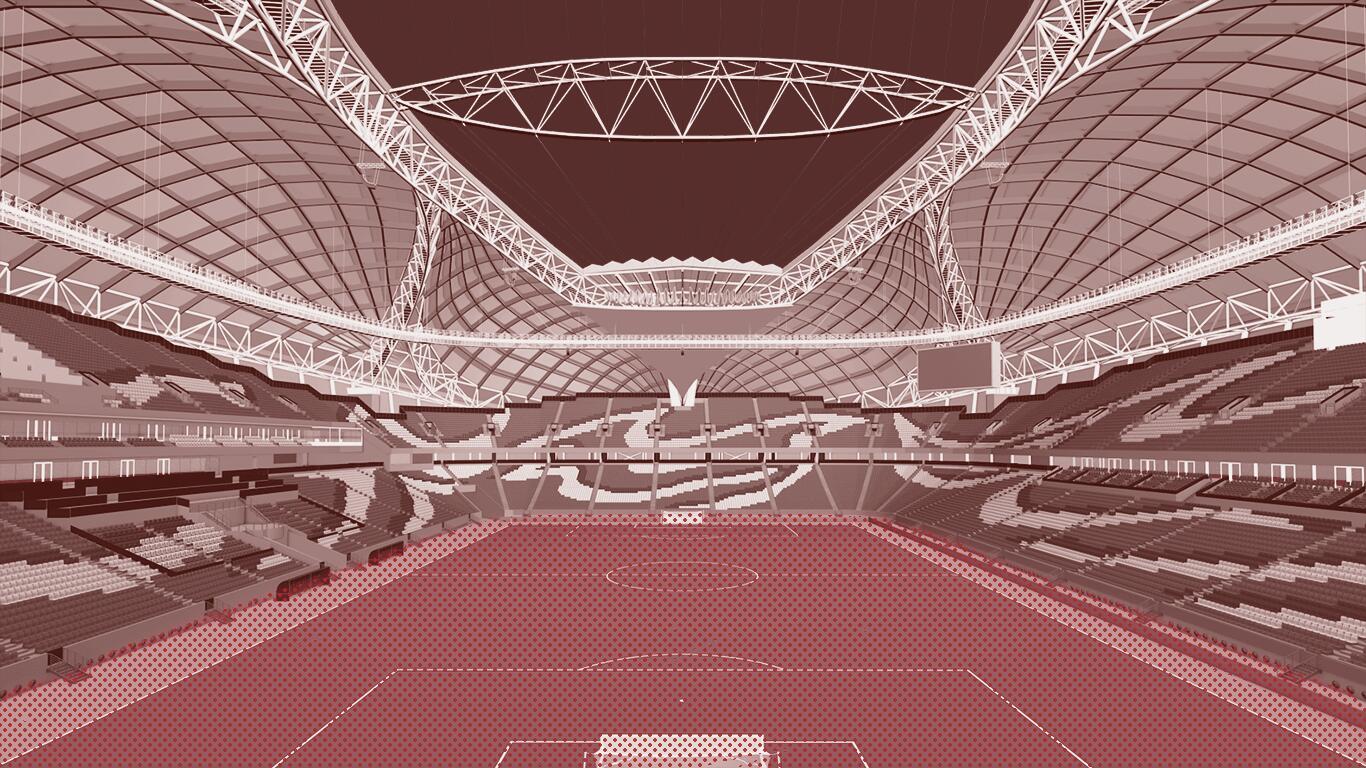













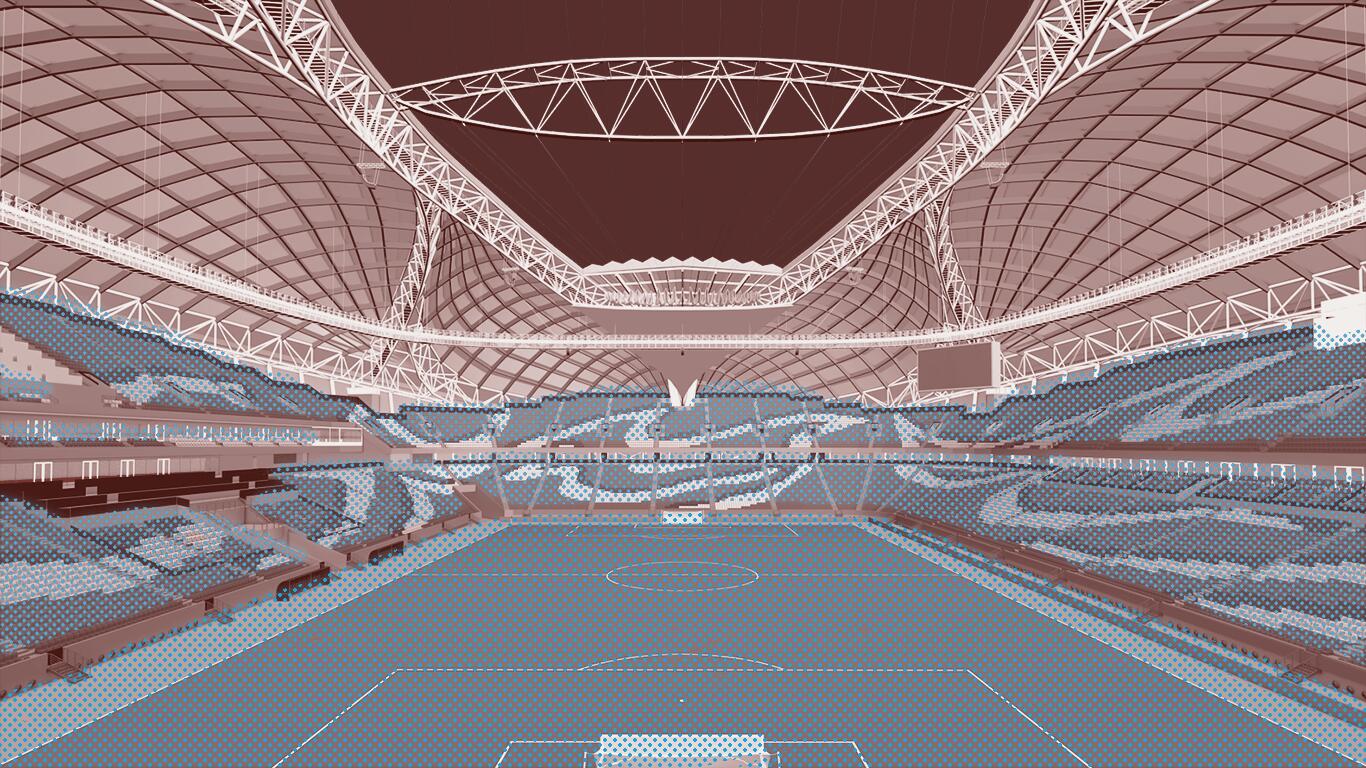























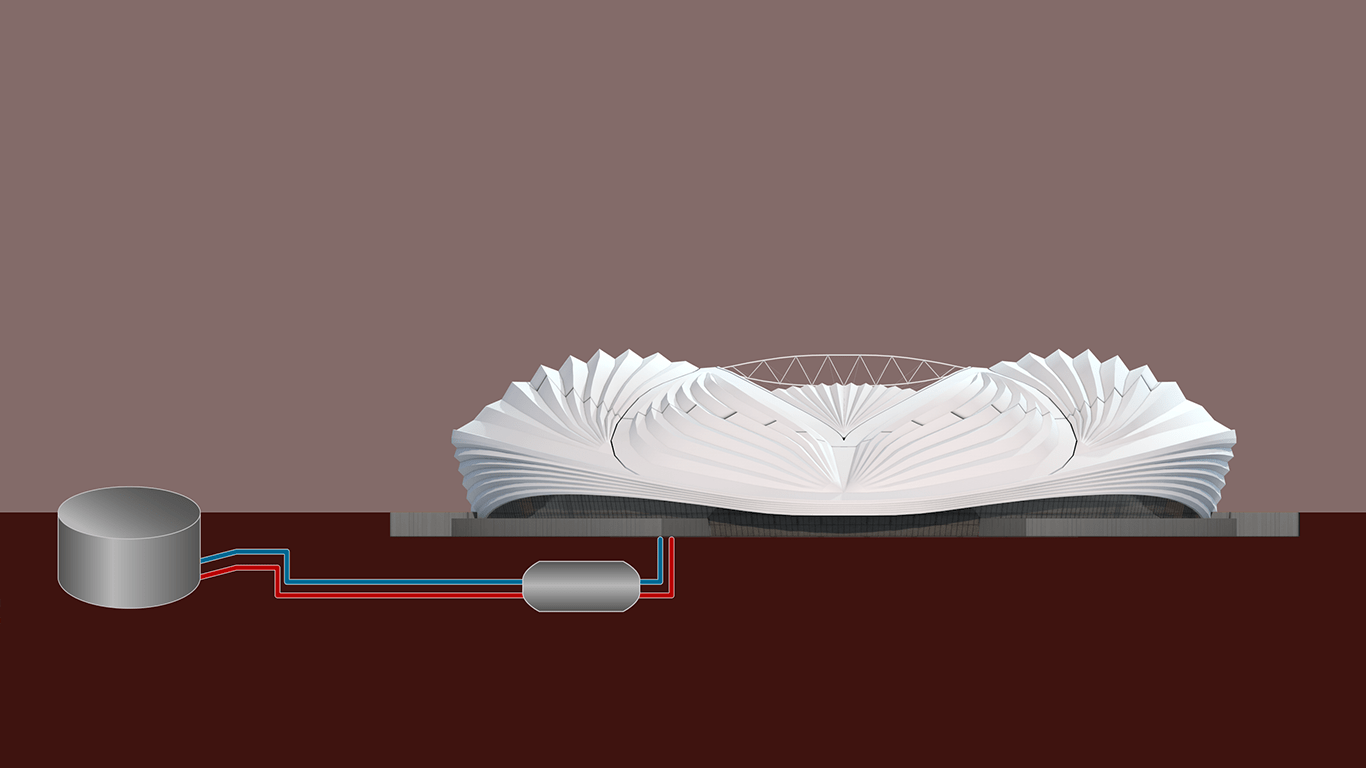
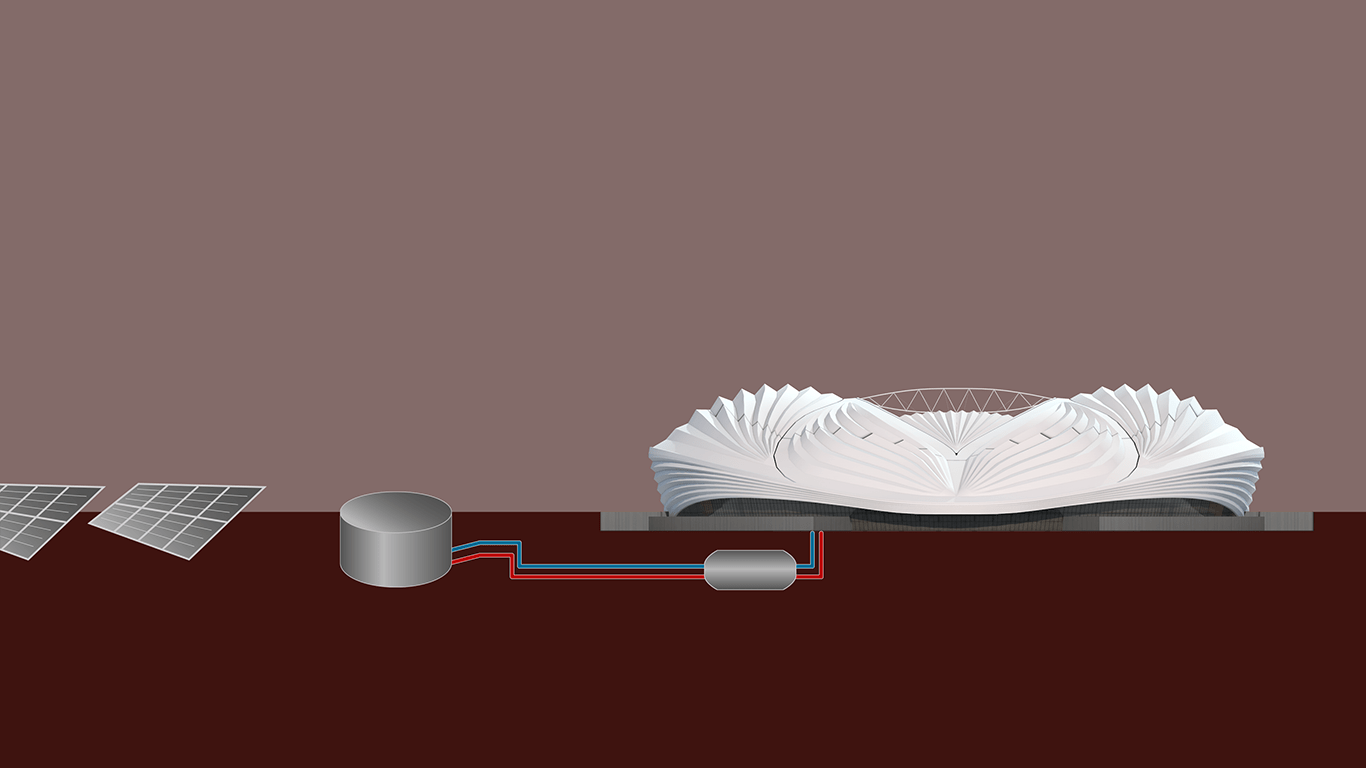
Scroll down and follow the air as it flows around the Al Janoub stadium, one of eight venues that will be used at Qatar 2022.
Qatar can be hot and humid. Warm winds blow in from the sea across the tiny Gulf state.
The first challenge is to keep the warm air out. In the case of the Al Janoub stadium, the roof is designed to channel air flows around and over the opening. Its light colour also reflects heat from the Sun.
Keeping things cool on the pitch and in the stands calls for other inventive solutions. Let's take a look inside.
On match days, 40,000 people fill the stands, each one a source of heat and moisture.
The stifling combination of Qatar's ambient temperature and the warmth generated within the venue calls for an effective cooling system.
Football fans in the stands are cooled by feeding air through vents under each seat.
Small nozzles, acting like shower heads, allow air to diffuse and envelop the spectators.
The flow is gentle, rather than blowing in a focused jet like a plane's overhead air vent.
This benefits the fans, but what about the players on the pitch?
Modern footballers can run more than 10km during a match, losing up to three litres in sweat, so they need to keep cool and hydrated.
In the humid environment of Qatar, it is harder for sweat to evaporate and the body can overheat, risking heat exhaustion.
So, for the Qatar World Cup, cold air is fed from big nozzles into the stadium to help create a cool layer over the pitch.
The air conditioning expert who helped develop the system, Dr Saud Abdul Ghani, says that the angle of the vents, and where and how the cold air sinks, means players will hardly feel a breeze.
The result is a bubble of cool air within the stadium of around 18-24C (64-75F), no higher than two metres from the ground or stands, instead of cold air blasted into the desert sky. So what happens next?
As the cool air warms up again, it is sucked out through extractor fans in the middle tier area.
Then it is filtered, re-cooled and pumped back into the stadium, completing the circuit.
So, how is the air cooled to keep the stadium comfortable? Let's take a broader view.
The warm air is cooled by funnelling it past pipes filled with chilled water in heat exchangers in each corner of the stadium.
Once the cold water absorbs the heat, it is pumped to a huge 40,000 litre storage tank, 3km (1.86 miles) away, where it is re-cooled, ready for the next day's match.
The entire cooling system is powered by a recently constructed solar plant around 80km (50 miles) from the centre of Qatar's capital, Doha.

Keeping things cool on the pitch and in the stands calls for other inventive solutions. Let's take a look inside.
On match days, 40,000 people fill the stands, each one a source of heat and moisture.
The stifling combination of Qatar's ambient temperature and the warmth generated within the venue calls for an effective cooling system.
Football fans in the stands are cooled by feeding air through vents under each seat.

Small nozzles, acting like shower heads, allow air to diffuse and envelop the spectators.
The flow is gentle, rather than blowing in a focused jet like a plane's overhead air vent.
This benefits the fans, but what about the players on the pitch?
Modern footballers can run more than 10km during a match, losing up to three litres in sweat, so they need to keep cool and hydrated.

In the humid environment of Qatar, it is harder for sweat to evaporate and the body can overheat, risking heat exhaustion.
So, for the Qatar World Cup, cold air is fed from big nozzles into the stadium to help create a cool layer over the pitch.
The air conditioning expert who helped develop the system, Dr Saud Abdul Ghani, says that the angle of the vents, and where and how the cold air sinks, means players will hardly feel a breeze.

The result is a bubble of cool air within the stadium of around 18-24C (64-75F), no higher than two metres from the ground or stands, instead of cold air blasted into the desert sky. So what happens next?
As the cool air warms up again, it is sucked out through extractor fans in the middle tier area.
Then it is filtered, re-cooled and pumped back into the stadium, completing the circuit.
Once the cold water absorbs the heat, it is pumped to a huge 40,000 litre storage tank, 3km (1.86 miles) away, where it is re-cooled, ready for the next day's match.

The entire cooling system is powered by a recently constructed solar plant around 80km (50 miles) from the centre of Qatar's capital, Doha.
Dr Cool
The man who devised the entire system, Dr Saud Abdul Ghani, told the BBC that Qatar wants to create a legacy, to serve the country long after the footballers have gone home.
He says years of extensive research have gone into what he calls "thermal comfort", creating an environment that is pleasant for the maximum number of people. Conversations with athletes and fans at the World Athletics Championships, held in Qatar in 2019, helped inform the design that will benefit the visitors and players in the World Cup.
A player's perspective
The BBC reached out to Hajar Saleh, a defender with Qatar's national women's football team and a player since she was 11. She knows all about the demands of playing top level sport in extreme conditions. She says humidity is the biggest challenge.
We are used to heat, but when you combine heat and humidity things become more difficult Hajar Saleh
Hajar has had first-hand experience of playing in two of the new venues with the new air conditioning systems, the Khalifa and the Educational City stadium.
She says it makes a huge difference, especially when playing in June, one of Qatar's hottest months of the year.
Is the system sustainable?
The organisers of Qatar 2022 promise that the power for cooling entire stadiums will not result in additional greenhouse gas emissions, because the electricity comes from its new solar power facility.
But the aim of ensuring the entire tournament is carbon neutral is a much bolder ambition.
The amount of "embodied" carbon - that's the emissions produced while building the stadiums - accounts for 90% of the venues' overall carbon footprint, with an estimated 800,000 tonnes of greenhouse gases released into the atmosphere. That's the equivalent of driving a passenger car around the world 80,000 times, according to the US Environmental Protection Agency emissions calculator.
Looking beyond the stadiums, there's the impact of transport to the World Cup, including flights taking fans to the country.
Fifa says that the compact nature of the tournament, with only short distances between venues means that emissions from travel between sites in Qatar is estimated to be less than a third of those produced at Russia 2018.
Qatar's green promises rest on using carbon offsetting to compensate for all the CO2 already emitted.
So far it's not very clear how they hope to achieve this. Fifa says it is using different technologies to compensate for World Cup emissions, including energy efficiency, waste management, renewable energy and, possibly, planting trees. However, the final selection of projects cannot yet be confirmed.
Such schemes can take decades before they become effective in capturing carbon. A recent BBC investigation suggested that some forests planted for offsetting only exist on paper.
So it will be some time before we can truly judge whether Qatar has indeed achieved its green goals or whether the claims of sustainability are a lot of hot air.
The country is also still fending off criticism for the high human cost among the 30,000 migrant labourers who built the stadiums, including a large number of workers killed and seriously injured. There have also been accusations of forced labour, gruelling working conditions, squalid housing, unpaid wages and passports confiscated.
The Qatari government disputes these accounts, and insists that since 2017 it introduced measures to protect migrant labourers from working in excessive heat, limit their working hours and improve conditions in workers' camps. However, in 2021 alone, 50 workers died and more than 500 others were seriously injured in Qatar among all those participating in projects connected with the World Cup, according to data gathered by the International Labour Organization. This is another off-field issue where the desert kingdom's record will remain under scrutiny.
Credits
Written and produced by Johannes Dell, Leoni Robertson, Sara Fayyad, Mohamad Hamdar and Dominic Bailey
Design by Maryam Nikan and Gerry Fletcher
Development by Kaveri Biswas and Adam Allen
Project Management by Sally Morales
Consultant: Professor Graeme Maidment, London Southbank University
Images: Getty, Hum3D, Hajar Saleh
You may also be interested in these stories:
Ut et suscipit enim. Nam aliquam porttitor sapien elementum mollis. In quis turpis ante. Morbi et ex aliquam, ornare neque sit amet, porttitor est. Quisque eleifend consequat turpis. Curabitur ultrices luctus quam, et dapibus quam bibendum non. Praesent facilisis augue magna, eu volutpat nibh gravida et. Cras pulvinar, ligula vel consectetur molestie, lorem eros euismod arcu, sed condimentum leo metus efficitur ante. Duis eu diam semper, hendrerit est porta, tincidunt odio. Maecenas sagittis justo lacus, ac varius est dictum sit amet. Nam vitae turpis dignissim, tincidunt felis sit amet, dignissim sapien. Integer et iaculis ex. Sed rhoncus elit vitae massa facilisis venenatis.
Curabitur lorem ligula, aliquet id lorem ut, molestie consequat sem. Donec sit amet lacus sagittis, gravida nunc a, volutpat elit. Nullam elementum, leo sed gravida euismod, enim leo venenatis dolor, eget consequat nisi nisl vel tortor. Ut hendrerit non justo nec porttitor. Aenean et dolor laoreet augue vulputate commodo ac ut turpis. Morbi luctus lacinia felis at pellentesque. Interdum et malesuada fames ac ante ipsum primis in faucibus. Nullam tristique faucibus mauris, sed volutpat ante consequat nec. Proin fermentum vehicula tortor, sed bibendum lectus volutpat ac. Cras dignissim elit id aliquam consectetur.
 World Cup 2022: How has Qatar treated stadium workers?
World Cup 2022: How has Qatar treated stadium workers?
 Fifa World Cup Qatar 2022: Day-by-day guide to fixtures
Fifa World Cup Qatar 2022: Day-by-day guide to fixtures
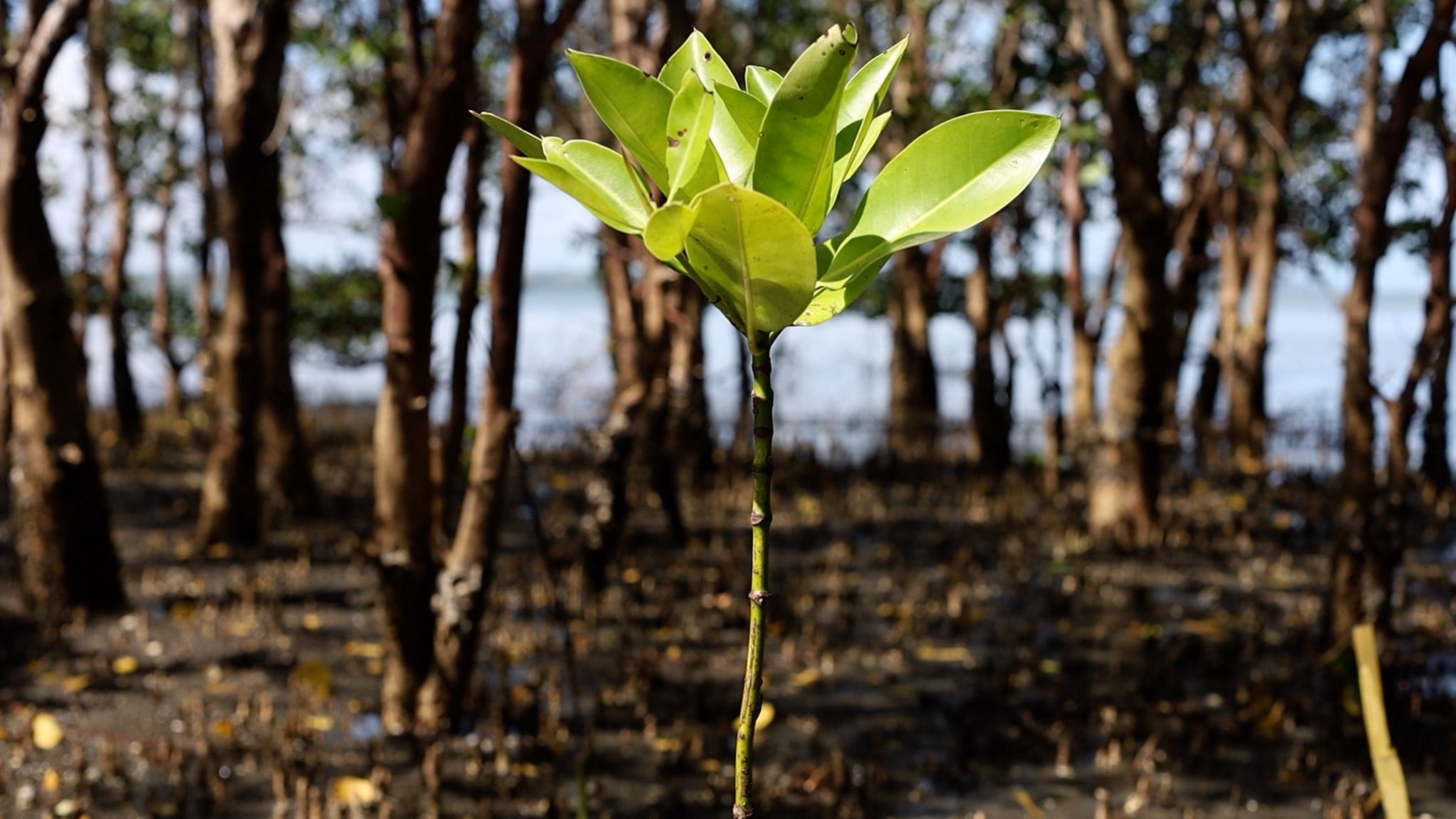 How phantom forests are used for greenwashing
How phantom forests are used for greenwashing